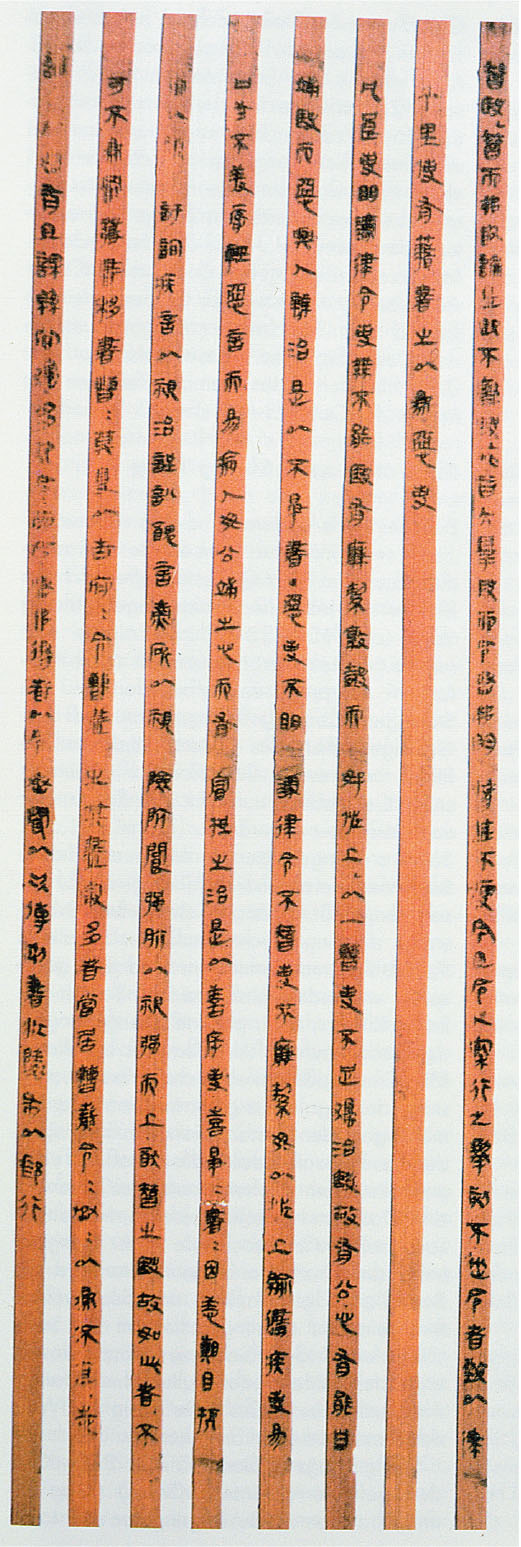How did the teachings of Daoism, Legalism, and other schools of thought differ from Confucianism?

Inscribed Bamboo SlipsIn 1993 Chinese archaeologists discovered a late-
DDuring the Warring States Period, rulers took advantage of the destruction of states to recruit newly unemployed men to serve as their advisers and court assistants. Lively debate often resulted as these strategists proposed policies and refuted opponents, and new schools of thought emerged. Many of these schools directly opposed the ideas of Confucius and his followers. Most notable were the Daoists, who believed that the act of striving to improve society only made it worse, and the Legalists, who argued that a strong government depended not so much on moral leadership as on effective laws and procedures.